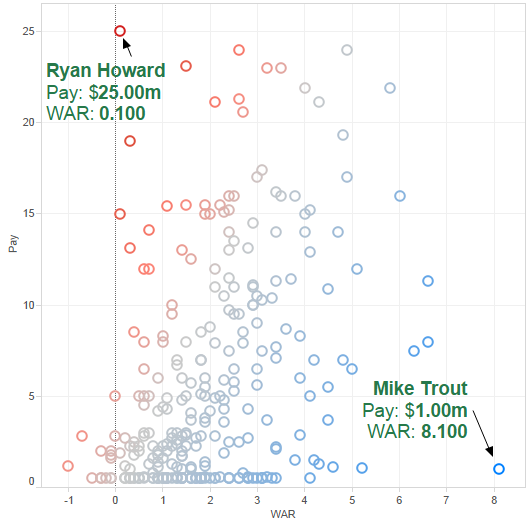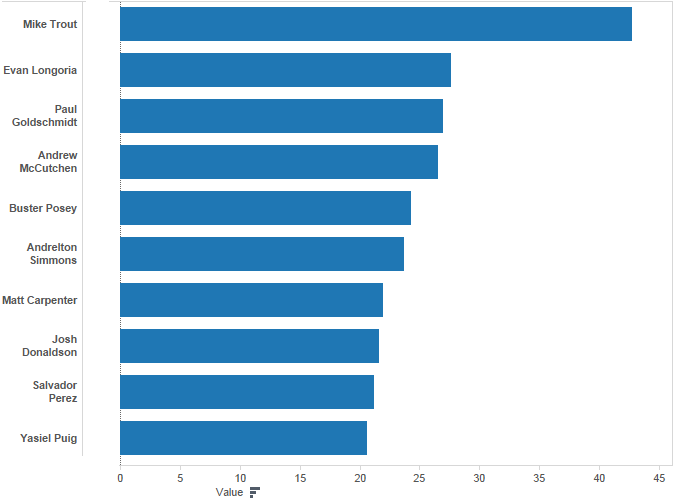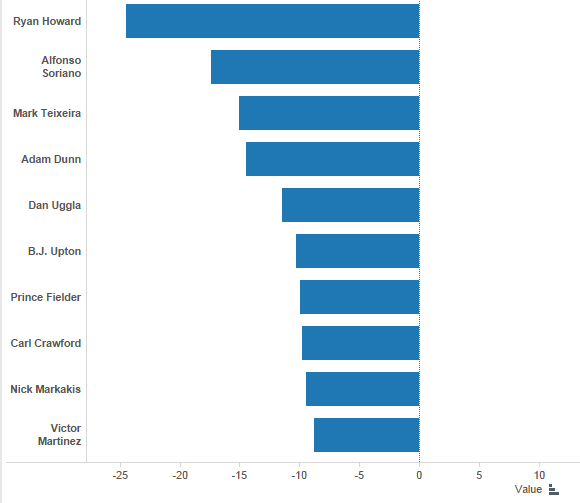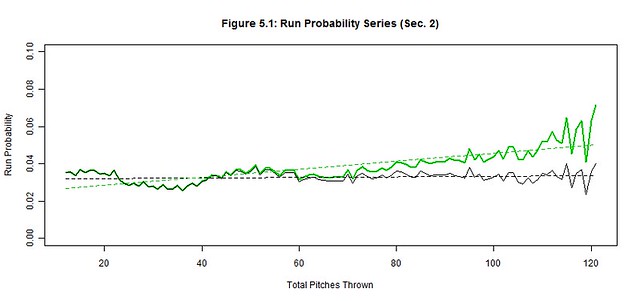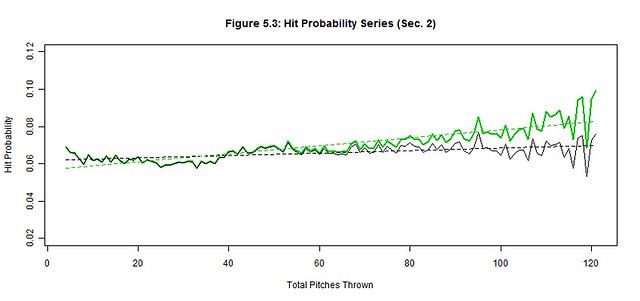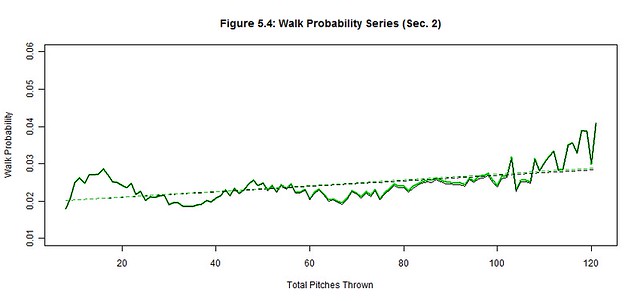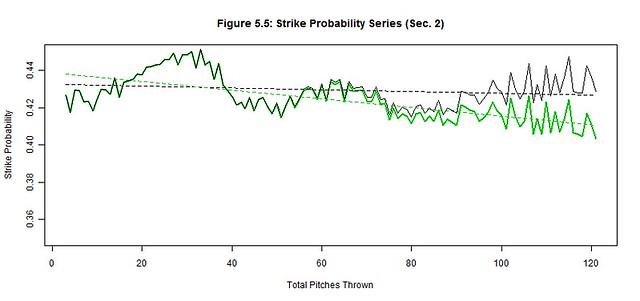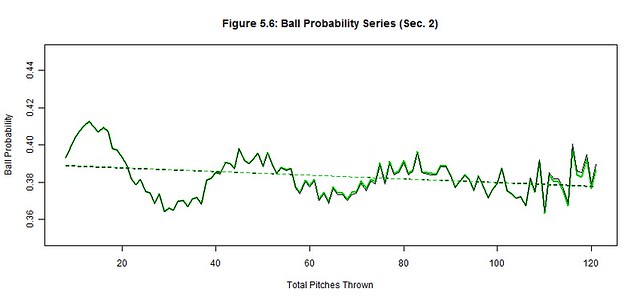Baseball America Top 10 Prospects Retrospective: Part 1
Part of being a Cubs fan these days is obsessing over prospects. When your product on the field is substandard you have to find something positive to look at and the Cubs farm system is a definite positive. With 2 prospects ranked in Baseball America’s Top 10 (Javier Baez and Kris Bryant) and 7 prospects in their Top 100 there is a lot to be excited about. The primary question that I have then is how successful has Baseball America been at predicting performance? I am going to analyze this over a series of posts that will examine the statistical outcomes of these top prospects while also giving some historical insight on why these players succeeded or failed. So to start off we will go through every Top 10 prospect list that Baseball America has created. Let’s begin with the 1990 edition which is the first one listed on their website.
|
1990 |
Name |
Position |
Team |
Career WAR |
|
1 |
Steve Avery |
LHP |
ATL |
20.3 |
|
2 |
Ben McDonald |
RHP |
BAL |
20.7 |
|
3 |
John Olerud |
1B/LHP |
TOR |
57.7 |
|
4 |
Juan Gonzalez |
OF |
TEX |
36 |
|
5 |
Sandy Alomar |
C |
CLE |
13.6 |
|
6 |
Kiki Jones |
RHP |
LAD |
N/A |
|
7 |
Todd Zeile |
C |
STL |
22.4 |
|
8 |
Eric Anthony |
OF |
HOU |
0.3 |
|
9 |
Greg Vaughn |
OF |
MIL |
25.4 |
|
10 |
Jose Offerman |
SS |
LAD |
13.7 |
What are your initial reactions to this list? I was surprised there was only one player that didn’t make the majors on it. There are also a number of notable players that despite only being 22 years old I still remember playing. I think I had a lot of these guys’ baseball cards growing up. Now that you have had a chance to contemplate that list, let’s dig a little bit deeper into each player.
Steve Avery-LHP- BRAVES
Avery was drafted with the third overall pick by the Braves in the 1988 draft behind pitcher Andy Benes and shortstop Mark Lewis. He was a 6’4 lefty that moved through the Braves farm system rather quickly. In his first full professional season (1989) he made it up to AA putting up stellar numbers. Across both A and AA levels he posted a 2.11 ERA in 26 starts with an 8.7 K/9 and 2.8 BB/9 rate. So as a high draft pick that rocketed through the minors with great success it made sense that he ranked as the number one prospect in baseball. After 13 starts in AAA in 1990 he got the call to the Major Leagues. He made his debut against the Cincinnati Reds at Riverfront Stadium and was not very good, giving up 8 ER in just 2.1 IP. His first season in the Big Leagues did not go well as he posted a 5.64 ERA in 99 IP. There were some underlying numbers that indicated some bad luck though and in the next season he proved that he was much better than his debut indicated. Avery went on to become a very good pitcher over the next 3 years.
|
Year |
IP |
ERA |
FIP |
K/9 |
BB/9 |
WAR |
|
1991 |
210.1 |
3.38 |
3.82 |
5.86 |
2.78 |
2.7 |
|
1992 |
233.2 |
3.20 |
3.37 |
4.97 |
2.73 |
3.6 |
|
1993 |
223.1 |
2.94 |
3.26 |
5.04 |
1.73 |
5.2 |
As he posted these increasingly good season at such a young age (21-23) and on some pretty good Braves teams, he looked to be one of the next great pitchers. Sadly this would be the peak of Avery’s career. At the end of the 1993 season Avery sustained an injury, straining a muscle below the armpit of his pitching arm. While the injury did not require surgery he never seemed to be the same pitcher and some have speculated that it forced him to change his mechanics. Many people have blamed the heavy workload that he had early in his career and the high pressure of a consistently playoff bound Atlanta Braves team. His next three seasons on the Braves while productive where a significant step down for Avery.
|
Year |
IP |
ERA |
FIP |
K/9 |
BB/9 |
WAR |
|
1994 |
151.2 |
4.04 |
3.97 |
7.24 |
3.26 |
2.3 |
|
1995 |
173.1 |
4.67 |
4.13 |
7.32 |
2.7 |
2.4 |
|
1996 |
131 |
4.47 |
3.86 |
5.91 |
2.75 |
2.3 |
Following the 1996 season he signed as a Free Agent with the Boston Red Sox. At this point his career was essentially over as he never would pitch more than 130 innings in a season or have an ERA below 5.00 in season again. He hung around the Red Sox for two years and one more season with the Cincinnati Reds in 1999. He was out of the big leagues for several years until he made a brief comeback in 2003 with the Tigers. So was Steve Avery deserving of being ranked as the number one prospect in baseball? Well from a talent perspective certainly, Avery is a perfect example of the volatility of pitching in baseball. That being said he was extremely effective early on in his career for the Braves so I would still consider him a success.
Ben McDonald- RHP- ORIOLES
McDonald was drafted first overall in the 1989 draft out of the LSU baseball program. He was a star at both basketball and baseball at LSU. He helped lead the 1988 Mens Olympic Baseball Team to a Gold Medal and also helped lead his LSU team to the College World Series twice. The 6’7 right-hander was one of the greatest College Pitching prospects of all time and had quite a resume coming into professional baseball. The same year he was drafted he made his major league debut against the Cleveland Indians pitching 2.2 innings in relief of Curt Schilling and allowing 1 ER. He would join the Orioles starting rotation in 1990 and performed quite well, finishing 8th in Rookie of the Year voting. He was very mediocre the next 2 seasons before putting up a 4.3 WAR season in 1993.
|
Year |
IP |
ERA |
FIP |
K/9 |
BB/9 |
WAR |
|
1990 |
118.2 |
2.42 |
3.58 |
4.93 |
2.65 |
1.6 |
|
1991 |
126.1 |
4.84 |
4.20 |
6.06 |
3.06 |
1.3 |
|
1992 |
227 |
4.24 |
4.32 |
6.26 |
2.93 |
1.9 |
|
1993 |
220.1 |
3.39 |
3.68 |
6.98 |
3.51 |
4.3 |
It seems like he was rushed to the majors rather quickly and had a bit of an adjustment period. Sure the numbers are not as dazzling as the extreme hype that was on this kid but by 1993 he was becoming an effective pitcher. He would go on to pitch another 2 seasons with the Orioles before signing with the Milwaukee Brewers as a Free Agent.
|
Year |
IP |
ERA |
FIP |
K/9 |
BB/9 |
WAR |
|
1994 |
157.1 |
4.06 |
4.16 |
5.38 |
3.09 |
3.1 |
|
1995 |
80 |
4.16 |
4.72 |
6.98 |
4.28 |
0.9 |
In 1995 McDonald had some tendinitis issues in his shoulder. He went on the DL multiple times that season which may have been a warning sign for things to come as his career would soon be derailed by shoulder injuries. He pitched 2 seasons with Milwaukee and then his career abruptly ended as he had a surgery to repair his rotator cuff which failed. He was traded to Cleveland in a deal that brought Jeff Juden and Marquis Grissom to Milwaukee but ended up being returned to the Brewers due to the unsuccessful surgery. His final two seasons looked like this.
|
Year |
IP |
ERA |
FIP |
K/9 |
BB/9 |
WAR |
|
1996 |
221.1 |
3.90 |
4.31 |
5.94 |
2.72 |
4.6 |
|
1997 |
133 |
4.06 |
3.65 |
7.44 |
2.44 |
3.1 |
Ben McDonald is yet another example of the volatility of pitching prospects. A lot of people have likened Stephen Strasburg to McDonald in terms of the hype and the potential injury risks. It is a valid concern and teams should try to learn from players like McDonald in order to figure out how to limit the risks of injury. That being said there is certain inevitability to pitchers getting injured that should be factored into expectations for top prospects.
John Olerud- 1B- BLUE JAYS
Olerud was drafted in the 3rd Round of the 1989 Draft out of Washington State University. He was a standout player at WSU as he was effective both as a hitter and pitcher. In 1988 he was a consensus All-American as both a 1B and Pitcher and was named Baseball America College Player of the Year. He was known for wearing his batting helmet while playing 1B. This was a precaution after having an operation to remove a brain hemorrhage (it was discovered after he collapsed during a workout). He was one of only a few players to jump immediately to the Big Leagues and skip the Minors. He quickly established himself as a quality Major League hitter and posted an 8 WAR campaign in just his 4th season.
|
Year |
Slash Line |
BB% |
K% |
HR |
ISO |
wRC+ |
WAR |
|
1990 |
.265/.364/.430 |
13.5 |
17.8 |
14 |
.165 |
122 |
1.4 |
|
1991 |
.256/353/.438 |
12.6 |
15.5 |
17 |
.183 |
115 |
2.5 |
|
1992 |
.284/.375/.450 |
13.0 |
11.4 |
16 |
.166 |
127 |
3.1 |
|
1993 |
.363/.473/.599 |
16.8 |
9.6 |
24 |
.236 |
179 |
8.1 |
He played with the Blue Jays another 3 seasons and put up solid but unspectacular numbers. He would then be traded to the Mets in 1996 for right-hander Robert Person. He was very good during his 3 seasons with the Mets. He maintained a batting average over .290 and OBP over .400 and was worth no less than 4 WAR in any season over that stretch. This included another spectacular 8 WAR season in 1998.
|
Year |
Slash Line |
BB% |
K% |
HR |
ISO |
wRC+ |
WAR |
|
1998 |
.354/.447/.551 |
14.4 |
11.0 |
22 |
.197 |
167 |
8.1 |
During the offseason before the 2000 season Olerud signed as a Free Agent with the Seattle Mariners. He would become a part of one of the best regular season teams in baseball history as the 2001 Mariners went on to win 116 games. He was a very effective player the first 3 seasons of his deal with the Mariners and had another decent season in his fourth year. He was released by the Mariners in 2004 and hung around on with the Yankees and finally the Red Sox before his career was over. His final career numbers are pretty impressive.
|
Year |
Slash Line |
BB% |
K% |
HR |
ISO |
wRC+ |
WAR |
|
Career |
.295/.398/.465 |
14.1 |
11.2 |
255 |
.170 |
130 |
57.7 |
Olerud was a sweet swinging left handed hitter with a great eye at the plate (look at that walk to strike out rate). He was also considered a pretty good defensive first baseman and he collected 3 Gold Gloves for his work (if that really means anything). While he may not have been a Hall of Famer he was definitely a great player. He is an example of an elite collegiate hitter that makes a tremendous impact in the Major Leagues. Also a random bit of information, according to Baseball Reference he is the cousin of Dale Sveum.
Juan Gonzalez- OF- RANGERS
Gonzalez was signed as an amateur free agent out of the Puerto Rico in 1986 as a 16 year old. As one would expect it took him a few years in the minors to develop. He progressively moved up a level each year and by 1989 he was hitting very well and even got a September call-up. The 1990 season was a success for him as well as he managed to hit 29 HR HRHR at the AAA level and got another late season call-up. The 1991 season is where he firmly established himself as a big leaguer. He would continue to progress until he peaked in 1993.
|
Year |
Slash Line |
BB% |
K% |
HR |
ISO |
wRC+ |
WAR |
|
1991 |
.264/.321/.479 |
7.1 |
19.8 |
27 |
.215 |
118 |
1.9 |
|
1992 |
.260/.304/.529 |
5.5 |
22.6 |
43 |
.269 |
131 |
3.0 |
|
1993 |
.310/.368/.632 |
6.3 |
16.9 |
46 |
.323 |
164 |
5.7 |
He quickly established himself as one of the premier power hitters in the game as he led the league in 92’ and 93’ in HR. This garnered him a significant amount of attention and he was elected into the All-Star game and finished 4th in MVP voting in 1993. He would go on to play with the Rangers through the 1999 season before leaving for the Tigers in 2000. Throughout that time he put up three more 40 HR seasons while also knocking in a lot of runs (157 RBI in 98’). He also garnered even more accolades as he brought home MVP Awards in 96’ and 98’. Just take a look at his peak seasons (age 26 to 29).
|
Year |
Slash Line |
BB% |
K% |
HR |
ISO |
wRC+ |
WAR |
|
1996 |
.314/.368/.643 |
7.6 |
13.9 |
47 |
.329 |
141 |
3.5 |
|
1997 |
.296/.335/.589 |
5.7 |
18.5 |
42 |
.293 |
127 |
2.2 |
|
1998 |
.318/.366/.630 |
6.9 |
18.8 |
45 |
.312 |
145 |
4.9 |
|
1999 |
.326/.378/.601 |
8.1 |
16.7 |
39 |
.276 |
139 |
3.6 |
His bat was tremendously valuable during that stretch for the Rangers which helped propel them to the playoffs. His value takes a bit of hit due to his lack of defense but even as a bat only player he was pretty good. He is ranks very highly on the Rangers career offensive stats. Here are some of his ranks on the all-time Rangers leaderboard according to Baseball-Reference.
|
Category |
His Numbers |
Rank |
|
Slugging % |
.565 |
2nd |
|
OPS |
.907 |
3rd |
|
Runs |
878 |
3rd |
|
Hits |
1595 |
4th |
|
Doubles |
320 |
4th |
|
HR |
372 |
1st |
|
RBI |
1180 |
1st |
So the team that signed him as a 16 year old kid out of Puerto Rico benefited greatly from their investment. I think that’s one very important point to think about when looking at these rankings. How did that player do with the team that developed them and that they were with at the time of their ranking by Baseball America? So far when looking through this list the players did have most of their success with the team they were on at the time of the ranking. While Gonzalez eventually left the Rangers in 2000 he was only gone for two years (with the Tigers and Indians) and accumulated 6 WAR. He returned to the Rangers for another 2 seasons accumulating another 2.6 WAR before briefly playing for the Royals and Indians. He played a season of Independent Minor League Baseball in 2006 and that was it. His overall career line looked like this.
|
Year |
Slash Line |
BB% |
K% |
HR |
ISO |
wRC+ |
WAR |
|
Career |
.295/.343/.561 |
6.4 |
17.8 |
434 |
.265 |
129 |
36.0 |
Juan Gonzalez is still considered one of the best players to come out of Puerto Rico. The numbers may not seem quite as impressive as he played in the steroid era and he may have a bit of a cloud looming over him because of that. Still I think anytime that your top prospect goes on to become your all-time leader in HR that is a success.
Sandy Alomar-C- INDIANS
Alomar came from a baseball family. His father was a moderately successful middle infielder in the 60’s and 70’s and his brother had a very successful career as a 2B that got him inducted into the Hall of Fame. Sandy Alomar Jr. was signed as an Amateur Free Agent out of Puerto Rico in 1983. He played his first professional season in 1984 as an 18 year old kid in the short season Northwest League. He slowly worked his way up through the minors and made his debut 1988 with 1 PA. In 1989 he put up some terrific numbers at AAA and got another brief call up to the majors. He really didn’t have much of an opportunity in San Diego as he was stuck behind Benito Santiago, so during the 1989 off-season he was involved in a big trade that sent him as well as Carlos Baerga and Chris James to the Indians for Joe Carter. The following season Alomar solidified himself at the major league level and would stay there for 18 seasons. He was quite effective in his first season which helped him bring home the Rookie of the Year Award and a Gold Glove. He was also elected to the All-Star team his first 3 seasons in the majors.
|
Year |
Slash Line |
BB% |
K% |
HR |
ISO |
wRC+ |
WAR |
|
1990 |
.290/.326/.418 |
5.2 |
9.5 |
9 |
.128 |
105 |
2.4 |
|
1991 |
.217/.264/.266 |
4.0 |
12.1 |
0 |
.049 |
47 |
-0.6 |
|
1992 |
.251/.293/.324 |
4.1 |
10.0 |
2 |
.074 |
72 |
1.3 |
Well I guess that is another example of why looking at All-Star Game appearances as a measure of success is stupid. While he was solid defensively in those first 3 seasons he only had one above average offensive campaign. That being said much of the lack of production was a result of a rash of injuries. In 1991 he struggled with various hip and shoulder problems and in 1992 he tore cartilage in his knee. In 1993 he suffered a back injury that eventually led to surgery. Then of course the strike prevented everyone from playing. In 1996 he finally got healthy and for the next few seasons was able to be moderately productive, including an exceptional season in 1997.
|
Year |
Slash Line |
BB% |
K% |
HR |
ISO |
wRC+ |
WAR |
|
1996 |
.263/.299/.397 |
4.3 |
9.5 |
11 |
.134 |
73 |
1.0 |
|
1997 |
.324/.354/.545 |
4.0 |
10.0 |
21 |
.222 |
131 |
4.2 |
|
1998 |
.235/.270/.352 |
4.1 |
10.3 |
6 |
.117 |
56 |
0.0 |
He made the All-Star team all three of these seasons as well. He definitely seemed to have a reputation as a good catcher and he certainly had the ability to be. The injuries he had struggled through prior to these three seasons would return and he would never again make more than 400 Plate Appearances in a season. He hung around with the Indians through the 2000 season before heading to the White Sox as a Free Agent. He would spend several years with the White Sox while also bouncing around to Colorado, Texas, Los Angeles (NL) and New York (NL). When you look back at Sandy Alomar Jr.’s career it can be a bit frustrating. He was obviously talented and had good bloodlines but suffered through a ridiculous amount of injuries. As a kid I always had a very positive opinion of him but looking at the numbers I am a bit disappointed.
|
Year |
Slash Line |
BB% |
K% |
HR |
ISO |
wRC+ |
WAR |
|
Career |
.273/.309/.406 |
4.4 |
10.3 |
112 |
.134 |
84 |
13.6 |
Alomar appears to be the position player equivalent of Ben McDonald on this list. He had tremendous upside and did put together a few good seasons but his overall career was hampered by injuries. It makes sense as Catcher is arguably the most physically demanding position outside of being a pitcher. When thinking about him in the context of this list I would not consider him a bust but simply as a disappointment.
Kiki Jones- RHP- DODGERS
Jones was drafted 15th overall in the 1989 draft out of Hillsborough High School. He had a very impressive professional debut in 1989 in Rookie Ball posting a 1.58 ERA in 62.2 IP while striking out 63 and walking 21. He pitched decently in 1990 but only appeared in 9 games which may have been an indication of injuries. 1991 was similar as he reached A+ but only appeared in 10 games. Sadly Kiki would never make it above AA and flamed out in 1993. He did pitch in the minors again in 1998-1999 and again in 2001 but never getting above A+. This is the first player who was a complete bust on the list.
Todd Zeile- C- CARDINALS
Zeile was drafted in the 2nd Round of the 1986 draft out of UCLA. He hit well at every level of the minors and after 3 seasons, made his debut in 1989. When he was called up he was the Cardinals most anticipated prospect of the year. He had played Catcher both at the collegiate and minor league level but was soon moved to third base to make room for Tom Pagnozzi. In 1990 he played a full season in the majors and would go on to play 5 solid seasons before being traded to the Cubs in 1995 for Francisco Morales, Paul Torres and Mike Morgan.
|
Year |
Slash Line |
BB% |
K% |
HR |
ISO |
wRC+ |
WAR |
|
1990 |
.244/.333/.398 |
11.8 |
13.5 |
15 |
.154 |
102 |
2.5 |
|
1991 |
.280/.353/.412 |
9.7 |
14.7 |
11 |
.133 |
118 |
2.6 |
|
1992 |
.257/.352/.364 |
13.2 |
13.6 |
7 |
.107 |
108 |
1.9 |
|
1993 |
.277/.352/.433 |
10.8 |
11.7 |
17 |
.156 |
112 |
1.6 |
|
1994 |
.267/.348/.470 |
10.9 |
11.7 |
19 |
.202 |
113 |
2.0 |
What is interesting is that during Zeile’s time with the Cardinals they were in the midst of an 8 year stretch without making the playoffs. So he played in a rather forgettable era of Cardinals baseball. He was moderately productive during this stretch but certainly not what you would hope to get out of a Top 10 Prospect. After those initial years with the Cardinals he didn’t stick with one team for very long. He played the rest of the 1995 season with the Cubs and was pretty bad (-1.3 WAR) and then became a Free Agent. He signed with the Phillies in the off-season but was traded in August of 1996 to the Orioles. He was fairly productive that season posting a career high in HR (25). The next season he continued to improve and began a stretch of 4 seasons in which he was worth 2 or more WAR while playing for 4 different teams.
|
Year |
Slash Line |
BB% |
K% |
HR |
ISO |
wRC+ |
WAR |
|
1997 |
.268/.348/.436 |
12.6 |
16.7 |
31 |
.191 |
122 |
2.5 |
|
1998 |
.271/.350/.437 |
10.6 |
13.8 |
19 |
.166 |
108 |
2.3 |
|
1999 |
.293/.354/.488 |
8.5 |
14.3 |
24 |
.196 |
109 |
2.5 |
|
2000 |
.268/.356/.467 |
11.9 |
13.6 |
22 |
.199 |
111 |
2.7 |
His ages 31 to 34 seasons seem to be his best and most consistent. While he may not have been a star level player, he was a useful major league hitter who posted solid walk rates and above average power. He became the epitome of a journey man as he played for 11 teams over the course of his career and has the distinction of hitting a HR with each one. That is probably his single greatest claim to fame as he is the only MLB player in history to have hit a HR with over 10 teams. He retired at the age of 38 in 2004 after playing his final season with the New York Mets. His final career line looked like this.
|
Year |
Slash Line |
BB% |
K% |
HR |
ISO |
wRC+ |
WAR |
|
Career |
.265/.346/.423 |
10.9 |
14.8 |
253 |
.159 |
104 |
22.4 |
Are these the kind of numbers you would expect from a Top 10 Prospect? Probably not, but overall he still put up solid offensive numbers and managed to hang around the league for a while. After retiring Zeile began working in the Film Industry. He has his own film production company called Green Diamond Entertainment and has appeared in a few movies and TV shows. He is also married to former Olympic Gymnast Julianne McNamara, so he has done pretty well for himself.
Eric Anthony- OF- ASTROS-
How Anthony got drafted is a truly fascinating story. According to a Sports Illustrated article from 1999, Anthony was a High School dropout working on an assembly line in Houston. Apparently he talked his way into a tryout with the Astros in 1986 and showed off amazing power. His tryout led to the Astros drafting him in the 34th round of the 1986 draft. He quickly showed off that excellent power in the minor leagues. After a 1989 season in which he hit .292/.353/.550 with 31 HR between AA and AAA he landed himself on the Baseball America Top 10 Prospects List. He was briefly called up in 1989 and would go back and forth between the minors and major leagues until 1992. He struggled to keep strikeouts in check and make contact. He did manage to play almost 2 full seasons for the Astros in 1992 and 1993.
|
Year |
Slash Line |
BB% |
K% |
HR |
ISO |
wRC+ |
WAR |
|
1992 |
.239/.298/.407 |
7.9 |
20.3 |
19 |
.168 |
102 |
1.0 |
|
1993 |
.249/.319/.397 |
9.1 |
16.3 |
15 |
.148 |
97 |
2.1 |
During the off-season before the 1994 season he was traded to the Seattle Mariners for Mike Felder and Mike Hampton. That trade worked out pretty well for the Astros as Mike Hampton turned out to be a pretty good pitcher for them and Anthony never really panned out. He would never put up a season over 1 WAR again and only lasted another 4 seasons in the major leagues. After the 1997 season he went to Japan to play for the Yakult Swallows for a little bit before returning to the United States. He hung around in the minors until the 2001 season but never again got called up to the majors.
|
Year |
Slash Line |
BB% |
K% |
HR |
ISO |
wRC+ |
WAR |
|
Career |
.231/.305/.397 |
9.7 |
21.9 |
78 |
.166 |
90 |
0.3 |
In terms of being ranked a Top 10 prospect, Anthony should be considered a bust. He only managed 2 full seasons and struggled to make enough contact for his power to be useful. That being said if you consider where he could be had he not gotten that tryout then it’s hard not to consider him a success. He went from working on an assembly line to be one of the top prospects in the game. Anthony is definitely a classic feel good story that deserves to have a movie made about it.
Greg Vaughn- OF- BREWERS-
Vaughn was drafted 4th overall in the 1986 draft out of the University of Miami. He had some baseball bloodlines as he was cousin of both Jerry Royster (Middle Infielder in the 70’s and 80’s) and Mo Vaughn. He raked at every level of the minors and by the 1989 season he was hitting well at AAA and got a call up to the majors. He immediately hit for power and put together a 30 HR season in 1993. Here is a look at his numbers while with the Brewers.
|
Year |
Slash Line |
BB% |
K% |
HR |
ISO |
wRC+ |
WAR |
|
1990 |
.220/.280/.432 |
7.7 |
21.2 |
17 |
.212 |
96 |
0.1 |
|
1991 |
.244/.319/.456 |
10.1 |
20.4 |
27 |
.212 |
114 |
2.4 |
|
1992 |
.228/.313/.409 |
10.5 |
21.5 |
23 |
.182 |
104 |
1.6 |
|
1993 |
.267/.369/.482 |
13.3 |
17.7 |
30 |
.214 |
124 |
5.0 |
|
1994 |
.254/.345/.478 |
12.1 |
22.0 |
19 |
.224 |
108 |
1.5 |
|
1995 |
.224/.317/.408 |
12.2 |
19.7 |
17 |
.184 |
84 |
-0.5 |
|
1996 |
.280/.378/.571 |
13.1 |
22.4 |
31 |
.291 |
130 |
2.3 |
Vaughn essentially was your prototypical power hitting corner outfielder who didn’t play defensive particularly well. His walk rates and power numbers where pretty good but he definitely had issues making contact. His power hitting prowess did garner enough attention to get him elected to two All-Star Games during his time with the Brewers. During the 1996 season he was traded to the San Diego Padres for Bryce Florie, Marc Newfield and Ron Villone. He finished the 1996 season setting (then) career highs in HR (41) and RBI (117). Vaughn struggled in the 1997 season but broke out big time in the 1998 season.
|
Year |
Slash Line |
BB% |
K% |
HR |
ISO |
wRC+ |
WAR |
|
1998 |
.272/.363/.597 |
12.0 |
18.3 |
50 |
.325 |
151 |
5.8 |
His 1998 season secured him another All-Star appearance and also helped him bring home a Silver Slugger Award. Vaughn also finished 4th in MVP voting behind Sosa, McGwire and Moises Alou. His 50 HR’s were overshadowed by record setting seasons from Sosa and McGwire but he was still very impressive. Interestingly enough the Padres decided to trade him in the offseason after this impressive season to the Cincinnati Reds. He was sent with Mark Sweeney for Josh Harris, Damian Jackson and Reggie Sanders. There was initially some tension with Vaughn’s arrival to Cincinnati as the Reds had a no facial hair policy at the time and he had a goatee. According to a Cincinnati Enquirer article from Feb. 3rd 1999 he publicly pleaded for ownership to make an exception to this policy stating that “My two kids have never seen me without it. You guys (the media) gotta lobby for that (a relaxation of the Reds’ no-facial hair policy).” Owner Marge Schott eventually relented and Vaughn went on to post another strong power hitting season (45 HR). The Reds won 96 games that season but just missed making the postseason.
|
Year |
Slash Line |
BB% |
K% |
HR |
ISO |
wRC+ |
WAR |
|
1999 |
.245/.347/.535 |
13.2 |
21.3 |
45 |
.289 |
116 |
3.5 |
He finished 4th in the MVP voting yet again behind Chipper Jones, Jeff Bagwell and Matt Williams. He only spent one season with the Reds and signed with Tampa Bay as a Free Agent. He put together two productive seasons for Tampa Bay before falling off the cliff and out of baseball after 2003. Like any power hitter of this era the cloud of steroids hangs over his numbers. There is no clear evidence that he used them as he does not appear on the Mitchell Report or any other report about steroids. Still many see the sudden increase in power in his 30’s and become suspicious. We likely will never know but what we do know is that he did put up some impressive numbers. Take a look at his career numbers.
|
Year |
Slash Line |
BB% |
K% |
HR |
ISO |
wRC+ |
WAR |
|
Career |
.242/.337/.470 |
12.2 |
21.4 |
355 |
.229 |
111 |
25.4 |
The combination of playing in the steroid era and playing in very few postseasons probably leads most people to forget about this guy. If you simply look at his numbers though, you realize as far as power hitters go he was pretty good. He had an above average BB% and ISO and stole some bases as well (121 career SB). While not a HOF talent he put together a pretty good career.
Jose Offerman- SS- DODGERS-
Offerman was signed as an Amateur Free Agent out of the Dominican Republic in 1986. He tore up the minor leagues starting in 1988 and had made it up to the AA level by 1989. He would play a full season at AAA in 1990 before getting a brief call-up that year. Prior to the 1991 season Baseball America would once again rank him in the Top 10 and he would actually move up to the #4 Ranked Prospect. He split time between AAA and MLB in 1991 before establishing himself as the Dodgers starting Shortstop in 1992. He would receive significant playing time with the Dodgers from 1992-1995 before being traded to the Royals for LHP Billy Brewer.
|
Year |
Slash Line |
BB% |
K% |
HR |
ISO |
wRC+ |
WAR |
|
1992 |
.260/.331/.333 |
9.5 |
16.4 |
1 |
.073 |
94 |
0.6 |
|
1993 |
.269/.346/.331 |
10.2 |
10.8 |
1 |
.061 |
89 |
1.4 |
|
1994 |
.210/.314/.288 |
13.1 |
13.1 |
1 |
.078 |
67 |
-1.3 |
|
1995 |
.287/.389/.375 |
13.5 |
15.2 |
4 |
.089 |
118 |
1.8 |
His final season with the Dodgers saw him get elected to his first All-Star game. He was considered pretty poor defensively at Shortstop which was part of the reason he was traded to the Royals in 1995. When you look at Offerman’s numbers he appears to be your typical no power, speedy middle infielder. He did have one season with the Dodgers in which he stole 30 bases although his success rate was only 69.7 percent. In Offerman’s first season with the Royals he moved around the diamond quite a bit, he saw time at SS, 2B and 1B. The following two seasons he settled in at 2B as he started 100 games there in 97’ and 152 in 98’. In 1998 Offerman would put together the finest season of his career.
|
Year |
Slash Line |
BB% |
K% |
HR |
SB |
ISO |
wRC+ |
WAR |
|
1998 |
.315/.403/.438 |
12.6 |
13.5 |
7 |
45 |
.124 |
121 |
4.6 |
His peak seasons where pretty good as he took lots of walks, hit for a high average and stole a lot of bases. From 1995-1999 Offerman posted his best offensive seasons at ages 26-30. After his strong 1998 season Offerman signed with the Boston Red Sox as a Free Agent. He would post another strong season in 1999 but would see his numbers start to decline after that. He would bounce around with a number of teams (Mariners, Expos, Twins, Phillies and Mets) until 2005. He would hang around the minor leagues until 2009 at the age of 40. His final career numbers look like this.
|
Year |
Slash Line |
BB% |
K% |
HR |
SB |
ISO |
wRC+ |
WAR |
|
Career |
.273/.360/.373 |
11.7 |
13.9 |
57 |
172 |
.100 |
97 |
13.7 |
Overall Offerman was an above average middle infielder. He certainly was not someone to build around but more of a complementary piece. In my opinion for a Top 10 Prospect to be considered a success they need to become a player you build around. So from that perspective I consider Offerman a failure but he was still a pretty good ballplayer.
Final Thoughts-
Looking at these players in depth can be fascinating and filled with compelling stories. I can’t make a judgment on the effectiveness of Baseball America’s rankings yet as I have only looked at one year but I can give my initial reactions to this information. So far this has only further reinforced my beliefs about prospects. That would consist of one thing.
1. Pitching is extremely volatile so keep your expectations for elite pitching prospects in check.
That is why I really respect the way the Cubs Front office has gone about building the farm system. Spending that first draft pick on an elite position prospect and attacking pitching in volume. I am sure I will develop more opinions as I continue analyzing these top lists but that’s all I can think of right now. I hope you enjoyed this expedition into the careers of Top Prospects and I look forward to posting the next edition of this series later in the week.
